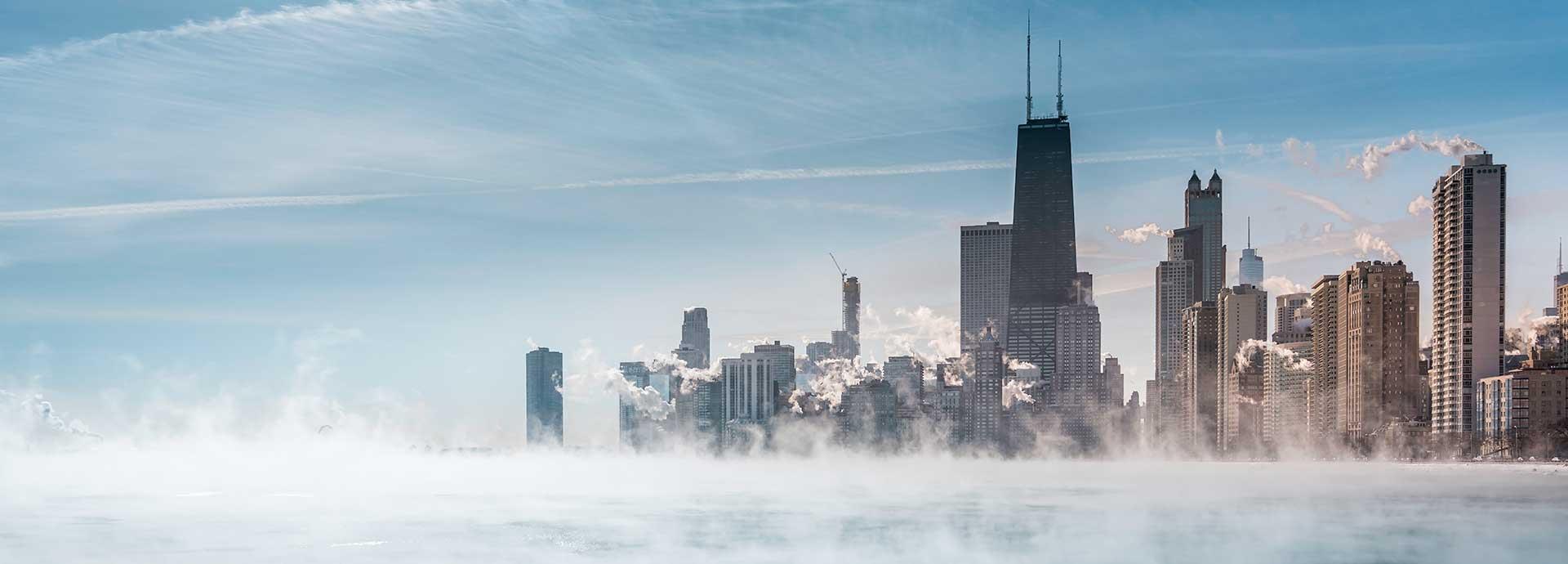

Critics of renewable energy have challenged the ability of wind and solar power to perform during extreme weather conditions, which are becoming commonplace due to climate change. However, if the performance of renewables during the 2019 polar vortex in the U.S. is anything to go by, there is little reason to worry.
As much of the U.S. prepared to face a polar vortex in January 2019 and the extreme cold temperatures it would bring, analysts predicted that demand for energy would skyrocket. In many parts of the country, though, energy prices did not rise in proportion to demand, thanks in part to the expanding share of renewables in U.S. energy production.
According to data from the U.S. Energy Information Agency, temperatures during the 2019 polar vortex were significantly below other similar events in 2014 and 2018, nevertheless, energy prices, while elevated, did not meet the records set in earlier years. Additionally, power systems did not experience extended capacity outages.
Weathering the storm
Every type of energy faced some challenges from the extreme cold, but there was no evidence that power grids that sourced a higher percentage of their energy from renewable sources fared worse than those that primarily use traditional sources, such as coal.
Analysis of power capacity conducted after the polar vortex by PJM Interconnection, which operates power grids in 13 states in the Midwest and Northeast, showed that their systems were not operating at maximum capacity and that the systems had fewer capacity outages than during previous extreme weather events. The company reported outages of an average of 9.6 percent of capacity during the 2019 polar vortex compared with 22 percent during the 2014 polar vortex. The outages were shared among energy sources with the company reporting the highest percentage among coal and natural gas-fired power plants, but also some issues with wind generation.
PJM’s report on performance during the 2019 polar vortex showed that the mix of energy sources contributing power remained consistent during the extreme temperatures.
In its report on the 2019 polar vortex, however, consultancy Wood Mackenzie said renewable sources did face some challenges. According to Wood Mackenzie data, production from both wind and solar decreased during the event. Wood Mackenzie analysts concluded that for renewables to continue to produce effectively during extreme weather events, power grids will need to improve their transmission capabilities and companies will need to increase the use of storage, such as long-duration storage batteries.
Gaining inspiration from Europe
Jussi Heikkinen, Director of Growth and Development in the Americas for Wärtsilä Energy Business, agrees that improving storage capabilities is critical for building a truly reliable energy grid, especially in periods of extreme heat and cold.
“Storage, both short-term balancing storage (30 mins) and long-term shifting of solar power from day to night (6 hours), will be critical to managing the climate and weather in the high-renewable power systems,” Heikkinen said. “When there is not enough renewable energy to cover the consumption, and the battery storage is discharged, the flexible generation (critical power) is needed to ensure security of supply.”
Renewable sources still make up only a fraction of U.S. power generation, but evidence from northern European countries, where renewable use is more widespread and temperatures are lower over a longer period of time, shows that these sources are sustainable power generators for cold climates.
In Denmark, for example, heating for households and industrial and commercial premises is provided through district heat networks. The heat is produced by a combination of solar, thermal, wind and traditional sources. The network captures waste heat and recycles it back into the system. Wärtsilä has developed a model of electrifying district heating with renewable energy in Helsinki.
The company has developed a district heat network proposal that replaces coal-fired power plants with energy produced by a combination of wind turbines and heat pumps by using waste heat from data centres and sea water.
Building a reliable energy grid
The United States, with its vast territory and complex power grid divided among numerous companies, may not be an ideal candidate for district heating plans, but there are ways to expand the use of sources such as wind and solar for electricity production.
Heikkinen says that flexible power plants will be critical as the U.S. seeks to increase the share of renewables in power generation.
“They will help increase renewables and utilise them efficiently, and in the 100% renewable power systems, they do the critical power function with non-fossil, renewable fuels. Such fuels will emerge in large quantities as the demand for them grows due to the rapidly expanding target of reaching for 100 percent carbon-free power,” Heikkinen said.
The performance of renewables during the polar vortex demonstrates that these sources can continue to produce energy on par with fossil fuels during extreme weather conditions, and their potential for U.S. power generators will only increase as storage and transmission technology improves.

